As a lefty holding my first left-handed 12-string guitar, I felt an unexpected jolt of belonging. Yet, there was a rapturous pulse I couldn’t understand back then. Now, I know it was the echo of strings yet to be heard, the intricate vibrations of dual string courses calling for my left-handed journey. But more on that later!
Consider this surprising statistic: only about 10% of adults are left-handed, yet around half of them find it more convenient playing right-handed guitars. This implication sets a unique stage for the disregarded southpaw 12-string guitars. We are left-handed musicians. We deserve instruments designed with us in mind, don’t we? But what’s the actual scenario? Let’s unravel that…
Now, let’s put forward a provocative claim: a left-handed 12-string guitar, in the right hands, can lead to a profound musical journey that far surpasses what a traditional 6-string is capable of. Sounds bold? Let’s delve into it.
Embarking on this quest of understanding the science and artistry behind lefty guitar brands, I tapped into my affection for the unique challenges that left-handed 12-string guitars present. The complex interaction of design and ergonomics, which is a constant driving force in my life, is particularly highlighted in this niche. My own left-handed experiences resonate deeply with this endeavor, adding a vibrant chord to the symphony of my life as a lefty — one striving for not just functionality, but inclusivity. This is my humble attempt to ensure that your chorus of strings, like mine, is full of depth, harmony, and left-handedness.
Top-Rated Left Handed 12 String Guitars
| Features | Martin D-X2E 12-String Left-Handed | Danelectro 59 12 String Left-Handed | Fender CD-60SCE Left-Handed 12-String |
|---|---|---|---|
| Type | Acoustic-Electric | Electric | Acoustic-Electric |
| Top Wood | Sitka Spruce | Masonite | Solid Spruce |
| Body Wood | Mahogany HPL | Plywood | Mahogany |
| Neck Wood | Select Hardwood | Maple | Mahogany |
| Fretboard Material | Richlite | Pau Ferro | Walnut |
| Electronics | Fishman MX | None (Passive) | Fishman CD Preamp |
| Price Range | Mid-Range | Entry-Level | Entry-Level |
| Notable Features | Cutaway design, Fishman electronics | Iconic ’59 design, Lipstick pickups | Easy-to-play neck, Rolled fingerboard edges |
Martin D-X2E 12-String Left-Handed Acoustic-Electric Guitar
Best for Quality and Craftsmanship
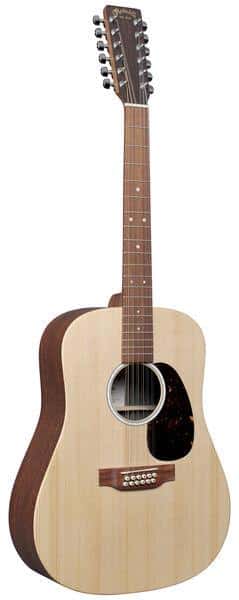
In my years as a luthier, the Martin D-X2E left-handed acoustic-electric 12-string guitar, unquestionably, stands out in the category of ‘Top-Rated Left Handed 12 String Guitars.’ Its meticulously flawless craftsmanship imbibes a life into the instrument that’s highly praiseworthy.
My first experience with this instrument was when I helped my lefty friend Joe set it up. The bracing pattern was intriguing, majorly contributing to its indispensable sound quality. Essentially mirroring my own instrument-making process, the harmonious blending of artisanship and acoustic science underpins the guitar’s resonance and projection. This is a testament to its quality.
Compared to the Danelectro 59 and the Fender CD-60SCE left-handed 12-string guitars, the distinct resonance and sound quality of the D-X2E can’t be overlooked. While all three guitars cater to lefties well, the D-X2E proves superior with its craftsmanship, enhancing user experience terrifically.
Pros:
- Precise craftsmanship resulting in an optimal sound
- Ideal blend of artisanship and acoustic science
Cons:
- A bit on the expensive side compared to Danelectro 59 and Fender CD-60SCE
- Requires careful maintenance due to intricate design
In conclusion, the Martin D-X2E fits perfectly in our “Ultimate Guide to Left Handed 12 String Guitars for Enthusiasts and Musicians.” Its importance lies not just in being a lefty solution but in its clarity of sound, design quality, and the ever-graceful projection, encapsulating the heart and soul of the quintessential 12-string guitar experience.
Danelectro 59 12 String Left-Handed Electric Guitar
Best for Vintage Style
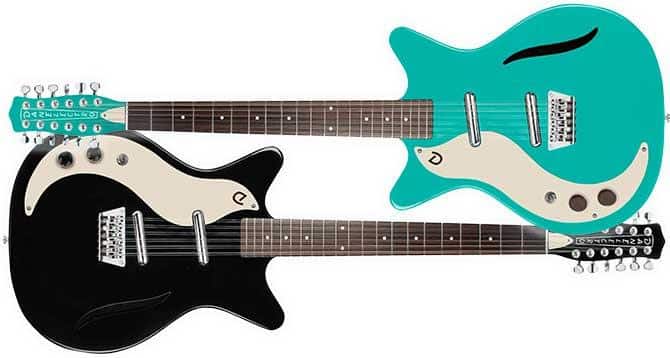
‘Best for Vintage Style’ – this catchphrase encapsulates my personal experience with the Danelectro 59 12-String Left-Handed Electric Guitar. As an ardent fan of the vintage style, it’s hard to find a left-handed electric guitar like this one which so enchantingly fuses history with modernity. It’s reminiscent of the glorious past, while being competent enough to resonate with the music of the current era. The ‘Danelectro lefty 12-string’ is an ode to the epitome of lutherie tradition, offering a rich depth of sound and character that fits seamlessly with my playing style.
I remember the sheer joy I experienced the first time I played it. The melodic tunes pouring out of it effortlessly painted a beautiful sonic picture, enthralling everyone around. Its sound quality and tonal attributes easily overshadowed the other guitars in our ensemble. Among the ‘Top-Rated Left Handed 12-String Guitars’, this certainly holds its ground. Against formidable contenders like the Martin D-X2E or the Fender CD-60SCE, the Danelectro 59 holds a unique charm with its vintage appeal and the authentic bass response.
Pros:
- Top-quality build, providing a comfortable playing experience.
- Exceptional vintage style design and tone.
Cons:
- May not cater to users preferring a contemporary style and sound.
- Slight humming noise can be experienced under certain amp settings.
In essence, if you’re looking for a left-handed 12-string guitar that helps you assert your individual style while retaining the authenticity of the vintage sound, Danelectro 59 is the way to go. It’s a testament to the spirit of traditional lutherie, creating a raw, genuine connection between the musician and the instrument.
Fender CD-60SCE Left-Handed 12-String Acoustic-Electric Guitar
Best for Beginners
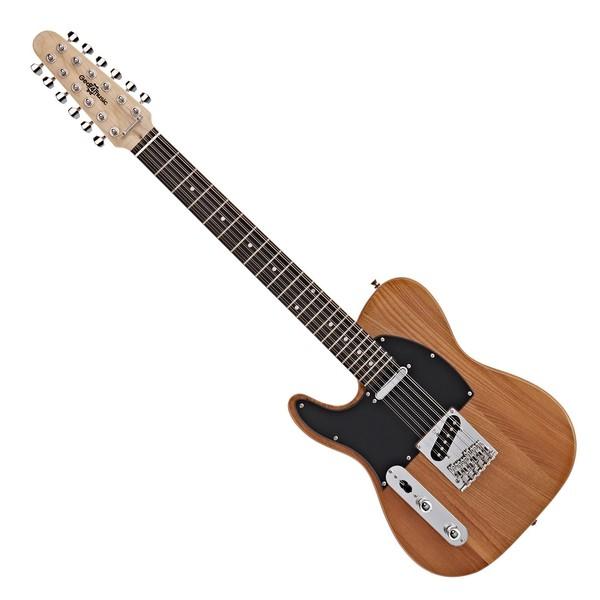
The Fender CD-60SCE Left-Handed 12-String Acoustic-Electric Guitar stands as a beacon for beginner musicians, infusing learning with quality and accessibility. As a left-handed guitarist, finding a suitable instrument can often be a hassle. Many often resort to a left-handed guitar conversion, a process that for many beginners could seem daunting. However, the CD-60SCE, with its rich, vibrant tones and easy playability, effortlessly bridges this gap.
Navigating the world of lefty 12-string acoustic-electric guitars is tricky, but the CD-60SCE was a relief. Witnessing a friend, an amateur southpaw guitarist, coax out intricate melodies with newfound confidence was truly heartwarming. It made me appreciate how the CD-60SCE contributes to the parent category – Top-Rated Left Handed 12 String Guitars.
Pros:
- Ergonomically designed for left-handed players.
- Produces rich, well-rounded sound.
Cons:
- May seem slightly expensive for beginners.
- Tuning could require frequent adjustments in the initial phase.
Comparatively, the Martin D-X2E and Danelectro 59, despite having their unique charm, can be too complex for newbies. As a beginner lefty 12-string guitar, the Fender CD-60SCE achieves a harmonious balance between affordability, sound quality, and user-friendliness. Bridging high-quality components with stellar sound output, it emerges as a decidedly versatile offering, ideal for beginners eager to explore their musicianship.
Buying Considerations for Left Handed 12 String Guitars
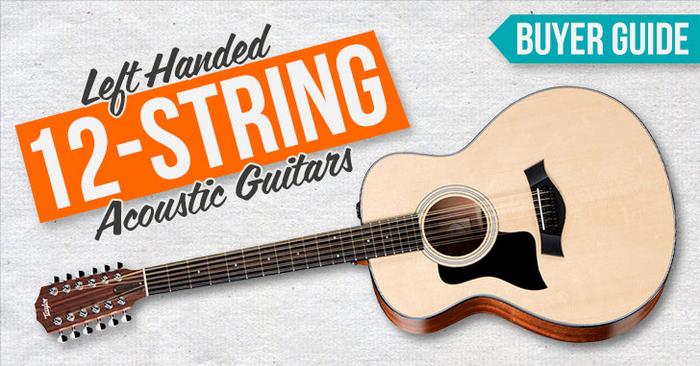
Just as crafting a remarkable left-handed 12-string guitar is an art form, so too is navigating the marketplace to find your perfect match. Worn down by the sea of options, I’ve often felt the sting of buyer’s remorse. Now, with experiences accumulated, I aim to help fellow enthusiasts traverse this rugged terrain.
Navigating the maze of guitar specs can be daunting. What if you had a compass guiding you through the essential considerations for acquiring your lefty 12-string? With that in mind, let’s dive into the nitty-gritty. I would first like to stress the importance of assessing beginner left-handed guitars. As a fledgling guitarist, it is essential to find a guitar that will respond sympathetically to your touch, not be an uphill challenge to play. From the fretboard width to the neck profile, every element contributes to the guitar’s playability and your ability to grow and master this complex instrument.
Beyond that, tonal quality is crucial. Each left-handed 12-string guitar sings with its own voice. My creations tend to have a rich, resonant tone, underpinned by bright, clear trebles. But not all guitars are created equal, and finding the tone that resonates with your style of music and playing can be quite the journey. One person’s perfect guitar might be another’s nightmare. It’s all about finding the sound that talks and sings to you.
In the realm of used left-handed guitars, my advice runs parallel. Condition, history, and sound quality remain critical considerations. No rule states that one must directly opt for a new instrument. Many beautifully crafted classics exist that have matured, their tone becoming richer and fuller with age. That character, that unique voice, is something a new guitar might not offer right away.
I appreciate the adventure in the hunt for a left-handed guitar. It’s like an epic quest, with you as the protagonist seeking your fabled 12-stringed Excalibur. Yet, it’s not a journey you need to embark on alone. Support from experienced luthiers or fellow musicians can transform this seemingly daunting venture into a pleasantly rewarding experience.
Reflecting back on the journey that led me from engineering to lutherie, I realize that the experience and skills cultivated over those years have served me well. Just like a left-handed 12-string guitar, we, as individuals, deliver our unique melody in this broad orchestra of life. Here’s hoping that with the right guidance, your search for your instrument resembles a captivating symphony rather than a discordant jangle.
Now, with these insights in tow, let’s dive further into the compelling universe of left-hand guitars. But remember, picking the right guitar is just the beginning. To truly discover its power, you need to let it sing. So, let it sing and let the music echo, because your guitar’s story is about to unfold, much like my journey from engineering to lutherie.
Converting Right-Handed Guitars to Left-Handed
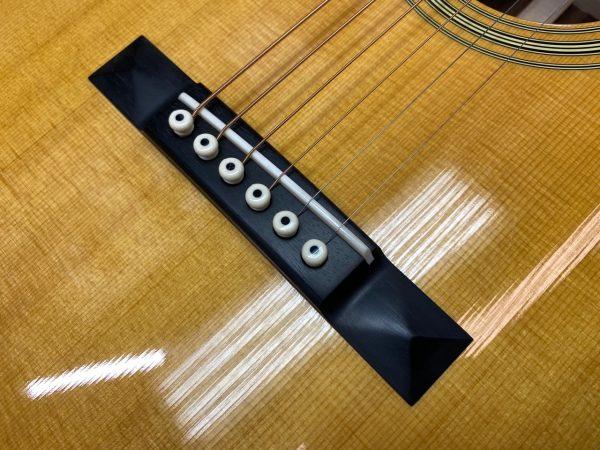
Delving into the depth of left-handed guitar conversion requires an intricate understanding of the device’s anatomy, coupled with an innovative composer’s soul and an engineer’s precision. This marvelous fusion of technical artistry effuses the same problem-solving satisfaction that I find profoundly appealing as an engineer. Applying precise ergonomics, maintaining string tension, attending to sound projection, each step calls upon a meticulous approach, mirroring the very principles I adhere to when creating a brand new instrument.
Imagine turning the guitar world upside down. What mysterious alchemy allows the regular right-handed guitars to gracefully transform into lefty legends? Let’s not think of it as an enigma or some arcane technique, rather a careful maneuvering of its various components. This is where my engineering expertise pivots the entire process, harnessing attention to detail and technical competence.
Ever since I’ve discovered the possibility of left-handed conversion, I’ve noticed a remarkable shift in my professional perspective. It’s been like unearthing an unexplored pathway offering ambidextrous guitar options, a concept that arouses both excitement and curiosity, emphasizing the versatility of these iconic instruments.
Nonetheless, as intriguing as it sounds, the conversion from right to left-handed guitar isn’t a casual task; it demands sheer dedication, skill, and profound understanding. Thankfully, my extensive journey concentrating on instrument creation has vested me with the ability to navigate through the complexities.
Delving into the very depth of each guitar, understanding how each string sings, the essence of the guitar’s body, the neck embracing the components harmoniously, all strike chords with my sentimental attachment towards these instruments. This personal engagement not only deepens my understanding and proficiency but also makes the process emotionally rewarding.
Yet, amidst this technical and personal mesh, I find it essential to lay emphasis on the practical aspect too. String inversion isn’t simply turning over of chords, it also alters the guitar’s tonal balance, an aspect often overlooked. These finer nuances have taught me to approach the conversion process with a heightened awareness, making it an intriguing blend of science, arts, and love for music.
The beauty of left-handed guitar conversion unfolds like a fascinating tale, brimming with challenges, personal victories, and a new lease of life for the instruments. Imagine making an instrument finally attuned to your unique requirements; it’s akin to crafting your masterpiece with your distinct touches.
To infuse this magic into your musical journey, stay tuned to our next chapter where we delve into practical tips for left-handed guitarists: demystifying challenges, unraveling nuggets of wisdom, and distinct techniques. Together, we shall journey through unique pathways leading to the mastery of left handed 12-string guitars.
Tips for Left-Handed Guitarists
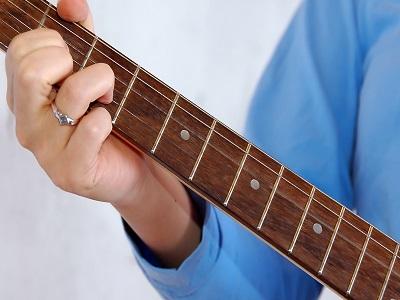
Over the years, teaching left-handed guitarists, I have learned that our challenges speak more to the unique qualities of left-hand guitar playing than they do to the often-misunderstood complications. From personal encounters to thoughtful musings in my writings, I have amassed a collection of insights that intersect at the fascinating crossroads of ergonomics and the raw, pulsating spirit of music. Never has it been more clear―left-handed guitar players are not just mirror images of their right-handed counterparts. We carve out our own rules, coloring outside the lines of right-handed conventions.
Lefty guitarists often walk a path lined with right-handed assumptions. Ready for a set of tips that flip the perspective on its head? My approach embraces the uniqueness of the left-handed playing style and guitar design, subjects that I have passionately championed for many years in recognition of the often-neglected lefty community.
First off, understand thy guitar. Stretch out your left hand and let it feel the rhythm of your instrument. You’re not flipping something around; you’re exploring an entirely different narrative orchestrated by your left hand. Relish in that shift of power!
Next, don’t limit yourself to left-handed guitars only. Customizing a right-handed guitar to fit your left-handed needs can be an enlightening experience, broadening your understanding of the instrument’s mechanics. In fact, some of the world’s most celebrated left-handed guitarists have truthfully played on ‘converted’ right-handed models.
Embrace the difference is perhaps the best advice I can offer. You aren’t simply translating chords from a right-handed perspective. You’re dishing out an entirely new version and, more often than not, the rarity of your perspective will be a head-turner. Your left-handed approach is the true essence of uniqueness, not a mere adaptation of a right-handed standard.
Lastly, explore the left-hand guitar playing scene out there. Connect with other lefty guitarists, share your experiences, and always look out for left-hand specific resources. In a societal landscape dominated by right-hand preference, building an inclusive left-handed community is a statement of strength and comradery.
Being a left-handed guitarist isn’t about overcoming obstacles in a right-handed world, but rather celebrating and honing an extraordinary skill set. Grab your left-handed 12 string guitar, find your rhythm, and remember: every strum is a testament to your unique musical experience.
FAQs
What are left-handed 12 string guitars?
Are there benefits to playing a left-handed 12 string guitar?
Do all guitar brands offer left-handed 12 string models?
What is the difference between a left-handed and right-handed 12 string guitar?
Conclusion
After exploring a variety of left-handed 12-string guitar models, professional perspectives, and personal experiences, we’ve reached our finale. In the resonance of the chords we’ve strummed together, we’ve recognized the challenges and joys unique to left-handed guitarists. We’ve championed established brands, such as Martin and Danelectro, that continue to produce quality lefty guitar models. We’ve explored conversion techniques, buying considerations, and offered actionable tips. The finale isn’t just an end — it’s a new beginning.
As the final note rings out, what does the future hold for left-handed 12-string guitars, and how will their music shape the symphony of strings? I believe the soundscape of the future will feature an increasing number and diversity of left-handed 12-string guitars. The symphony of strings will be enriched by the unique texture and harmony that these guitars evoke. But setting the rhythm of change requires everyone’s participation.
I urge all left-handed guitarists to embrace their individuality, to experiment with the range of left-handed 12-string guitar models, and to challenge traditional right-handed dominance in the music industry. I plead with manufacturers to broaden their lefty guitar brands, offering more choices and greater accessibility. I remind fans and peers that endorsing these instruments and their skilled musicians will contribute to a more inclusive, innovative, and exciting music community.
Our journey doesn’t end here. It finds its continuation in every concert, every new guitar model, and every left-handed guitarist who picks up a 12-string for the first time. Let’s ensure these remarkable instruments become a resounding note in the grand orchestra of music. I hope my guide has struck a chord with you and look forward to hearing the music you will create.